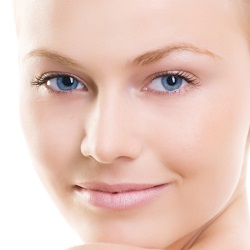Upper eyelid surgery, often referred to as a Blepharoplasty, is a common procedure used to remove excess skin on the upper eyelids. This excess skin is a result of aging and the consequent loosening of the skin.
The procedure may be performed for cosmetic or medical reasons. In terms of cosmetic needs, the procedure is performed for those that want to look younger and more alert. The surgery is also performed when the patient’s vision is impaired due to the excess skin.
Am I right for the surgery?
Before undergoing a blepharoplasty, it is important to get a clean bill of health from your doctor and clear yourself of any surgical risks like dry eyes, thyroid, eye disease, and diabetes. Smokers are often warned to stop smoking for at least 2 weeks prior to the surgery so that the healing process is not hindered.
Certain medications might also have to be stopped before the procedure. Your doctor will have more information on which medications you can and can’t take. Generally, anyone of legal age and in good health can choose to undergo this procedure.
The Procedure
During a blepharoplasty, incisions are made on the upper eyelid crease, along the natural folds. The area for the incision is marked before the surgery and the patient is put under using general anesthesia. After this, the surgeon makes the incision and removes excessive skin tissue and fat tissue.
In some cases, muscles might also have to be removed. Once removed, sutures or a skin adhesive is used to close the incisions.
For a blepharoplasty, your surgeon will asses your facial muscle structure and bone structure along with other factors before making the markings for the incision. They also mark when skin tissue and fat tissue are going to be removed.
The process is based on a variety of factors. For example, if you have dry eye problems, the doctor will make it a point not to remove too much tissue because your eyes require the protection. Sometimes lasers might be used to smoothen out the skin.
Recovery and results
A blepharoplasty is a fairly simple procedure. After the surgery, the sites of incision are soothed using an antibiotic ointment. Patients are advised to apply ice packs for 10 to 15 minutes, every hour after they wake up. The usage of ice packs can be reduced from the second day onwards. After the second day, heat packs are more important as they promote healing.
Pain medication may be necessary and will be prescribed by your doctor should the need arise. Swollen and bloodshot eyes will be present for days after the surgery. Complete healing may take a few weeks, and contact lenses along with eye makeup need to be avoided during this period.
The results of a blepharoplasty can last for 10 years or more. Patients have to remember that the surgery will not halt aging. It will only work to make you look younger for a certain period of time. Patients might have to consider repeating the procedure in the future.
Contact Our Office
Contact our office to learn more about an upper-eyelid surgery and the benefits it can provide you. Dr. Richard Bartlett, a board-certified plastic surgeon, will help you understand anything you want to know about the procedure and help you obtain excellent results.


 Recognized as one of “Boston’s Most Trusted Doctors” by Boston magazine, Richard A. Bartlett, M.D. is a board certified plastic surgeon in practice for over 30 years Dr. Bartlett is considered a “doctor’s doctor,” and is a favorite choice of New England medical professionals when referring family and friends for cosmetic and reconstructive plastic surgery in Boston, Massachusetts.
Recognized as one of “Boston’s Most Trusted Doctors” by Boston magazine, Richard A. Bartlett, M.D. is a board certified plastic surgeon in practice for over 30 years Dr. Bartlett is considered a “doctor’s doctor,” and is a favorite choice of New England medical professionals when referring family and friends for cosmetic and reconstructive plastic surgery in Boston, Massachusetts.

